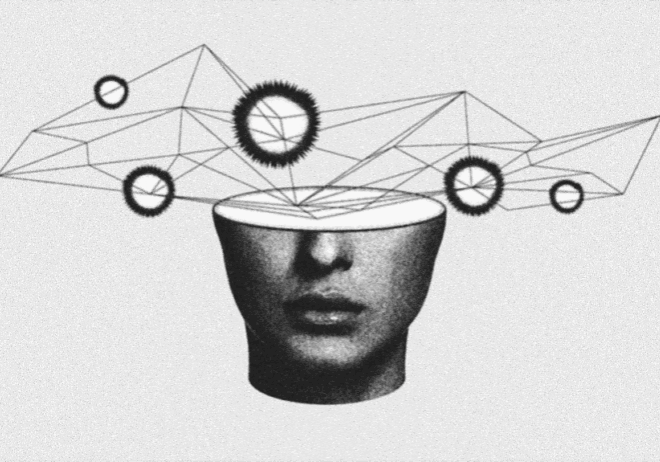
Meet Your Brand’s New Best Friend: Why Virtual Influencers Are the Future
Digitial world is shaking up in a most impressive way with the entry of virtual influencers. Yes, you heard it right—virtual influencers. But what’s the deal? Why are brands choosing pixel-perfect computer-generated characters over real-life personalities? And most importantly, why should marketers care about this?
The answer lies in the endless possibilities offered by these virtual stars—as they don’t age, don’t need breaks, and are always ready to deliver exactly as scripted. Because of their stability and control, brands are finding these CGI personalities to be more reliable than human influencers.
This new wave is creating a lot of noise and a revolution which is here to stay and make the difference. But there’s more to it. To understand better, let’s dive in and explore how these digital influencers are changing the marketing game and what you, as a Gen Z marketer, need to know to stay ahead of the curve.
Time to meet the new type of influencer—and they are not human
Virtual influencers are digitally created personalities with the help of CGI who just look, act, and behave like real people. But with one major difference, they are entirely controlled by a team of designers and marketers. They look like humans and are designed to be perfect, reliable and creative. For today’s marketers, this approach is obviously attractive and appealing. As they offer a way to connect with audiences through creativity and innovation, without the risks that come with real-life influencers such as no off-brand posts, no PR disaster.
We’re living in a world where the lines between real and digital are constantly blurring, and virtual influencers are the perfect example of that. They are the new face of marketing, seamlessly blending into our social media feeds and interacting with us just like they are real people. Isn’t it crazy? These AI influencers are transforming technology and fascinating us with what’s possible beyond the physical world. For brands, virtual influencers offer an exciting opportunity to connect with audiences in ways that are futuristic, creative, and perfectly curated.
Why brands are relying on virtual influencers and choosing them over humans
You might be thinking of different questions? Like —this new wave will fade with time? Or is it here to stay? And if it’s staying, how humans will deal with it? Virtual Influencers are more than just an experiment, they are the new growing force in the marketing world. Virtual influencers give brands total control. Every post, every caption, every outfit—they’re all carefully curated to match the brand’s image, and there’s zero risk of an influencer going rogue.
But this is not just about having control, these online stars offer a whole new world of creativity. For instance, if you want your virtual influencer to casually hang out on Mars or show off the latest fashion trends in a futuristic cityscape? No problem. The possibilities are endless, and for a generation of marketers who grew up loving video games, VR, and sci-fi, this creative freedom is a huge win. Virtual influencers aren’t bound by the limits of the physical world, which makes them the perfect blank canvas for bold, imaginative marketing campaigns.
Why are popular brands choosing AI influencers as the new face of their campaigns?
No wonder that popular brands have started noticing virtual influencers. From popular fashion giants like Balmain, Parada, and Calvin Klein, they all have walked into the virtual world, partnering with digital stars like Lil Miquela and Shudu Gram to promote their latest collections. And it’s not just the fashion industry—tech companies like Samsung are also getting in on the action, using virtual influencers to showcase their newest gadgets and innovations.

Virtual influencers are the new jackpot for brands as unlike human influencers, they have less requirements and never get tired offering good productivity. They can promote products across multiple platforms and countries simultaneously, without the hassle of scheduling conflicts or burnout. This scalability is a game-changer for brands looking to maximize their reach and engagement.
For marketers, this opens up an exciting opportunity. This is like having a perfect tool that allows you to create and maintain a perfectly crafted brand ambassador who can engage with your audience 24/7. It’s like having the ultimate influencer who is always on-brand, never controversial, and capable of pulling off stunts that no human could ever dream of.
Why Gen Z feels a real connection with virtual influencers in a digital-first world
How do virtual influencers resonate with this generation? Surprisingly, they fit into fit into Gen Z’s obsession with authenticity. Today’s generation grew up in a world where technology and reality seamlessly blend. For them, virtual influencers are just an extension of that—blurring the lines between fiction and reality in a way that feels fresh, exciting, and on-brand with their digital lives. These virtual personalities offer an intriguing mix of real and unreal, creating a unique social media experience that pushes the boundaries of traditional content.
What draws Gen Z in is that virtual influencers aren’t just flawless CGI models; they’re crafted with backstories, personalities, and even opinions that make them relatable. They’re designed to be more than a digital face, connecting with their followers through interests, causes, and experiences that mirror those of real-world influencers. By offering a creative twist on familiar content, virtual influencers satisfy Gen Z’s love for innovation and boundary-pushing engagement, bringing something fresh to a content-saturated world.
But with all this innovation comes a challenge—can brands build trust with an audience through a character that doesn’t actually exist? Trust is a cornerstone for Gen Z, and virtual influencers have to work extra hard to earn it. The answer lies in storytelling. Successful brands give their digital influencers depth by crafting narratives that are emotionally resonant and relatable. For instance, Lil Miquela isn’t just a CGI model but an activist, musician, and a character facing struggles that followers can relate to. By weaving these authentic stories into their virtual influencers’ personas, brands can create genuine connections and build trust, even when their influencer exists only in pixels.
Cut the chase
It’s no longer a shock—virtual influencers are not just a futuristic project. They are here and constantly gaining popularity among youngsters, offering fresh and exciting ways to engage. With endless possibilities and capabilities to stand for brand productivity 24/7, these digital influencers are becoming magical tools in the marketing world. So, are you ready to embrace the future? If yes, then welcome to the world of virtual influencers—where creativity knows no limits, and the future is whatever you make it.


